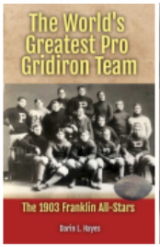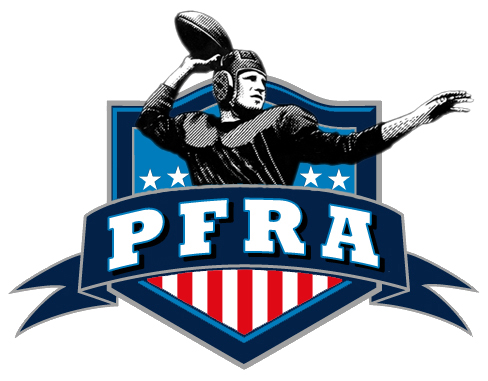COLLEGE HOF | ‣
Edgar Miller and His Enduring Impact on Notre Dame Football
While Notre Dame's gridiron history is adorned with the names of flashy running backs and prolific passers, the foundation of any successful team is built on a strong offensive line. Edgar Miller, a stalwart tackle for the Fighting Irish in the early 1920s, exemplifies this principle. This essay explores Miller's impactful career, examining his role in Knute Rockne's revolutionary offense, his contributions to national championship runs, and his lasting legacy within the Notre Dame football program.
-A Pillar of Stability: Anchoring the "Seven Mules" (Early 1900s-1924)
Born in 1901, Edgar Miller arrived at Notre Dame possessing a powerful physique and a natural aptitude for football. Under the tutelage of the visionary coach Knute Rockne, Miller blossomed into a dominant tackle. He became a key member of the famed "Seven Mules" offensive line, a unit renowned for its strength, cohesion, and ability to pave the way for the explosive "Four Horsemen" backfield. Miller's unwavering presence on the left side of the line created running lanes and provided crucial protection for the likes of Don Hutson and Jim Crowley. His relentless blocking and tactical intelligence were instrumental in the "Seven Mules'" success.
-A Champion on and Off the Field (1922-1924)
Miller's impact extended beyond individual accolades. He was a leader within the offensive line, setting the tone with his work ethic and dedication. His quiet confidence and unwavering focus were admired by teammates and coaches alike. During his tenure at Notre Dame, the Fighting Irish established a national powerhouse under Rockne. Miller played a vital role in their undefeated season in 1924, a campaign culminating in a thrilling Rose Bowl victory. His contributions were a cornerstone of this historic achievement.
-From Player to Coach: A Legacy Beyond Notre Dame (1925-1974)
Following his playing career, Miller transitioned into coaching. He served as the head coach for the United States Naval Academy from 1931 to 1933, compiling a respectable record. Miller then spent over four decades at Navy as the line coach, leaving a lasting impact on countless players.
Miller's coaching philosophy emphasized the fundamentals – a reflection of his own playing style and the values instilled in him by Knute Rockne.
-A Pillar of Stability: Anchoring the "Seven Mules" (Early 1900s-1924)
Born in 1901, Edgar Miller arrived at Notre Dame possessing a powerful physique and a natural aptitude for football. Under the tutelage of the visionary coach Knute Rockne, Miller blossomed into a dominant tackle. He became a key member of the famed "Seven Mules" offensive line, a unit renowned for its strength, cohesion, and ability to pave the way for the explosive "Four Horsemen" backfield. Miller's unwavering presence on the left side of the line created running lanes and provided crucial protection for the likes of Don Hutson and Jim Crowley. His relentless blocking and tactical intelligence were instrumental in the "Seven Mules'" success.
-A Champion on and Off the Field (1922-1924)
Miller's impact extended beyond individual accolades. He was a leader within the offensive line, setting the tone with his work ethic and dedication. His quiet confidence and unwavering focus were admired by teammates and coaches alike. During his tenure at Notre Dame, the Fighting Irish established a national powerhouse under Rockne. Miller played a vital role in their undefeated season in 1924, a campaign culminating in a thrilling Rose Bowl victory. His contributions were a cornerstone of this historic achievement.
-From Player to Coach: A Legacy Beyond Notre Dame (1925-1974)
Following his playing career, Miller transitioned into coaching. He served as the head coach for the United States Naval Academy from 1931 to 1933, compiling a respectable record. Miller then spent over four decades at Navy as the line coach, leaving a lasting impact on countless players.
Miller's coaching philosophy emphasized the fundamentals – a reflection of his own playing style and the values instilled in him by Knute Rockne.
The First Meeting of Notre Dame and Penn State
The discourse presented in this episode revolves around the inaugural meeting of the Nittany Lions and the Fighting Irish, a significant event in the annals ... — www.youtube.com
The narrative unfolds around the historical encounter between Penn State and Notre Dame, marking their first clash on the football field. I engage in a detailed examination of the circumstances leading up to the 1913 game, emphasizing both teams' relatively modest standings prior to their ascendance in collegiate football. My personal bias as a Notre Dame enthusiast is evident, yet I strive to maintain an objective lens while discussing the significance of this matchup. The episode provides a platform to reflect on the transformative journey of both programs, from their nascent stages to their eventual prominence in the sport.
This information comes from his original post titled: The First Notre Dame-Penn State Game.
Timothy P. Brown and I engage in a spirited dialogue about the broader implications of this game, including the societal and cultural contexts of American football during the early 20th century. We discuss the impact of coaching philosophies and the evolution of playing styles that characterized the game at that time. The reference to the football landscape of the era, especially the religious affiliations of many institutions and their influence on the game, adds a rich layer to our discussion. I highlight the innovative strategies that coaches like Jesse Harper employed, which would lay the groundwork for future developments in college football strategies.
Ultimately, the discussion serves as a recounting of a specific game and a reflection on how historical narratives shape our understanding of contemporary college football. I encourage listeners to consider the broader implications of this history and its relevance to the current landscape of the sport, as well as to engage with the memories and traditions that continue to define these iconic programs.
-Takeaways
-The inaugural meeting of the Nittany Lions and the Fighting Irish occurred in 1913, marking a significant event in college football history.
-Both Notre Dame and Penn State have storied football programs that were not always as prominent as they are today.
-The first game between Notre Dame and Penn State took place when both teams were relatively lesser-known and unestablished in the national football scene.
-Darin Hayes and Timothy P. Brown delve into the historical context and significance of this classic college football matchup in their podcast.
-The podcast provides insights into college football's evolution and highlights team prominence's changing nature over the decades.
-Listeners are encouraged to explore footballarchaeology.com for further historical tidbits and insights related to the sport.
Top players in Notre Dame Football History
One of the most storied programs in college football history is home to some of the greatest players in college football history... — bleacherreport.com
Identifying the top five players in Notre Dame football history is a subjective task, as different criteria can be used for evaluation. However, here's a list of five widely recognized legends who have left their mark on the program:
-1. Paul Hornung (1954-1956):
A versatile athlete who excelled as a running back, defensive back, kicker, and punter, Hornung won the 1956 Heisman Trophy, the only Notre Dame player to do so. He led the Fighting Irish to national championships in 1953 and 1954 and was inducted into the College Football Hall of Fame in 1985.
-2. Joe Theismann (1967-1970):
A talented quarterback known for his athleticism and strong arm, Theismann led Notre Dame to a national championship in 1966. He was a three-time All-American and finished second in Heisman Trophy voting in 1969. He went on to enjoy a successful NFL career, winning Super Bowl XVII with the Washington Redskins.
-3. Jerome Bettis (1989-1992):
A powerful running back nicknamed "The Bus," Bettis rushed for over 3,000 yards for Notre Dame and was a two-time All-American. He won the Maxwell Award in 1992 and was drafted 10th overall by the Los Angeles Rams in the 1993 NFL Draft. Bettis later became a Super Bowl champion with the Pittsburgh Steelers and is a member of the College Football Hall of Fame.
-4. Tim Brown (1984-1987):
Considered one of the greatest wide receivers in college football history, Brown set numerous school records at Notre Dame and was a two-time All-American. He won the Walter Camp Award in 1987 and was the Heisman Trophy runner-up the same year. Brown went on to a stellar NFL career with the Los Angeles Raiders and is a member of both the College Football and Pro Football Halls of Fame.
-5. Raghib Ismail (1988-1990):
Nicknamed "Rocket," Ismail was a dynamic running back and kick returner who revolutionized the college game with his speed and agility. He won the 1990 Heisman Trophy and led Notre Dame to a national championship in 1988. Ismail also enjoyed a successful NFL career as a kick returner and is a member of the College Football Hall of Fame.
It's important to note that many other Notre Dame players deserve recognition for their contributions to the program's rich history. This list is just a starting point for further exploration of the legendary figures who have shaped the Fighting Irish into one of the most storied programs in college football.
Honorable Mention: Joe Montana, Elmer Layden, Knute Rockne, George Gipp, Johnny Lujack, Angelo Bertelli, Tony Rice, George O'Connor, Ross Browner, Johnny Lattner, Leon Hart, Emil Sitko
Check out the BleacherReport.com article for their top 50 selections of Irish Greats of the Gridiron.
Related Titles
NOTRE DAME FIGHTING IRISH, UNVEILING A CLASSIC RIVALRYRelated Categories
COLLEGE HOF, COLLEGE FOOTBALL PROGRAMS, FOOTBALL ARCHAEOLOGYRelated Searches
Podcast:Football Archaeology, video:Football Archaeology, college football history, Notre Dame football, Penn State football, Nittany Lions, Fighting Irish, college football playoffs, football rivalries, football archaeology, sports:football, sports:college football










